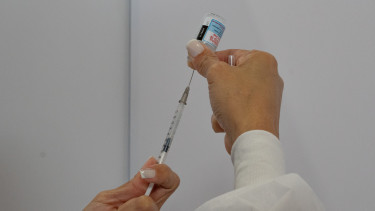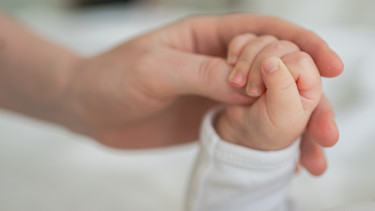ECDC issues warning about Delta coronavirus variant

Based on the available evidence, the SARS-CoV-2 Delta (B.1.617.2) variant of concern (VOC) is 40-60% more transmissible than the Alpha (Β.1.1.7) VOC and may be associated with higher risk of hospitalisation.
Furthermore, there is evidence that those who have only received the first dose of a two-dose vaccination course are less well protected against infection with the Delta variant than against other variants, regardless of the vaccine type. However, full vaccination provides nearly equivalent protection against the Delta variant.
Based on the estimated transmission advantage of the Delta variant and using modelling forecasts,
70% of new SARS-CoV-2 infections are projected to be due to this variant in the EU/EEA by early August and 90% of infections by the end of August.
In summary, available evidence of Delta VOC characteristics are indicative of:
- increased transmissibility,
- higher hospitalisation risk/increased severity,
- low vaccine effectiveness for symptomatic disease after partial vaccination (eg, one dose for twodose vaccines).
Since its first detection in India in December 2020, the Delta VOC has been reported by at least 85 countries globally, according to the World Health Organization (WHO). The variant is dominant among cases in India, the United Kingdom (UK) and Moscow, Russia.
By 21 June 2021, cases of the Delta VOC have been identified in 23 EU/EEA countries. Among these, theproportion of Delta VOC among sequenced cases during weeks 21-22, 2021 ranged from 0.0 to 66.2% (Figure 1, top figure), although the sequencing volume varies significantly by country (Figure 1, bottom figure).
Among the 12 countries that sequenced at least 10% of their isolates or at least 500 samples during weeks 21-22, the median proportion of Delta VOC detected was 2.4% (range 0.0–18.5%), which represents an increase compared to 0.0% (range 0.0-11.7%) observed in week 20-21. In Luxembourg, the proportion of Delta VOC doubled from 15.4% in week 21 to 30.9% in week 22. The overall SARS-COV-2 incidence of new cases, however, continued to decrease.

K417N mutation
On 18 June 2021, Public Health England (PHE) reported evidence of detections of B.1.617.2 carrying an additional K417N mutation (38 cases). The mutation has been suggested to be involved in immune escape and to affect binding of the spike protein to the ACE2 receptor. In the PANGO lineage designations, the mutational profile B.1.617.2+K417N is described by the AY.1 and AY.2 lineages. As of 18 June 2021, the AY.1 lineage has been detected in three EU countries (France, Poland and Portugal), while the AY.2 lineage has been detected in one country (Portugal), according to the GISAID EpiCov data. The proportion of the B.1.617.2 + K417N variant is currently very low in EU/EEA countries.
According to Hungarian news portal mfor, Hungary has reported five cases of the Delta variant, although the above maps do not reflect that.
Why should we be worried about the Delta variant?
"Unfortunately, preliminary data shows that it can also infect individuals that have received only one dose of the currently available vaccines," said ECDC Director Dr. Andrea Ammon in a statement.
It is very likely that the Delta variant will circulate extensively during the summer, particularly among younger individuals that are not targeted for vaccination.
"This could cause a risk for the more vulnerable individuals to be infected and experience severe illness and death if they are not fully vaccinated," she added.
The ECDC warned that
the probability that SARS-CoV-2 Delta VOC becomes rapidly dominant in the EU/EEA is considered very high.
Based on the estimated transmission advantage of the Delta variant, 70% of new SARS-CoV-2 infections in the EU/EEA as of early August are projected to be due to this variant. As a consequence, based on available evidence, there is a very high probability that there will be a surge of SARS-CoV-2 infections in the community, it warned.
Considering the very high probability of the Delta VOC becoming the dominant variant in the EU/EEA:
- The overall risk of SARS-CoV-2 infection related to the expected increase in circulation of the Delta VOC for thr general population is considered to be low for fully vaccinated sub-populations and high-to-very high for partially or unvaccinated sub-populations.
- The overall risk of SARS-CoV-2 infection related to the expected increase in circulation of the Delta VOC for the vulnerable population is considered to be low-to-moderate for fully vaccinated sub-populations and very high for partially or unvaccinated sub-populations.

There is a moderate probability of infection for fully vaccinated individuals in the vulnerable population, while it is considered low in the general population. This difference takes into account that a large part of the fully vaccinated sub-population in the vulnerable population are older and it is assumed that in this group vaccine effectiveness is reduced compared to the general population
What should be done?
Ammon also pointed out that the good news was that "having received two doses of any of the currently available vaccines provides high protection against this variant and its consequences."
However, about 30% of individuals older than 80 years and about 40% of individuals older than 60 years have not yet received a full vaccination course in the European Union.
There are still too many individuals at risk of severe COVID-19 infection whom we need to protect as soon as possible
, said Ammon.
"Until most of the vulnerable individuals are protected, we need to keep the circulation of the Delta virus low by strictly adhering to public health measures, which worked for controlling the impact of other variants," she added.
ECDC advises to maintain and strengthen physical distancing and other non-pharmaceutical interventions (such as physical distancing, hand and respiratory hygiene, wearing face masks in indoor and crowded outdoor settings, including in areas where adolescents and young adults gather), to reduce the risk of clusters and outbreaks of COVID-19.
Examining the age structure of infections, the ECDC sees that
the younger age groups (<25 and 25-49 years) are projected to be most prevalent over the course of the summer
, with those over 60 years of age presenting the least number of new daily cases.
It also highlighted that the vaccine rollout has a large impact on both hospitalisation and death rates, due to at-risk groups having a relatively high vaccination coverage.
It is very important to progress with the vaccine roll-out at a very high pace
, warned Ammon.
"At this stage it becomes crucial that the second vaccination dose is administered within the minimum authorised interval from the first dose, to speed up the rate at which vulnerable individuals become protected."
The ECDC warned that "modelling scenarios indicate that any relaxation over the summer months of the stringency of non-pharmaceutical measures that were in place in the EU/EEA in early June could lead to a fast and significant increase in daily cases in all age groups, with an associated increase in hospitalisations, and deaths, potentially reaching the same levels of the autumn of 2020 if no additional measure are taken."
Meanwhile, the Hungarian government is to ease restrictions once 5.5 million people are vaccinated with at least one dose of a COVID-19 vaccine. Linking the lifting of lockdown measures to a 'milestone' again is odd, given that this strange practice was given up already at 5 million as the vaccination campaign fizzled out, but the cabinet has a tendency to 'sell' firecrackers as H-bombs.


Once 5.5 mn people got their first jab, which 'milestone' is likely to be reached in four to five days,
- mask-wearing will no longer be compulsory, even in indoor settings;
- no immunity certificate will be required to enter beaches, spas, hotels, and restaurants.
Immunity certificates will be needed to attend sport events, concerts, festivals, and night clubs, announced Prime Minister Viktor Orbán's chief of staff Gergely Gulyás on Thursday.
Risk analysis - Four modelling scenarios
Many EU/EEA countries are currently implementing or considering the partial lifting of the non-pharmaceutical interventions (NPIs). Lifting of such measures would result in increased opportunities for viral transmission. On the other hand, vaccination rollout is continuing and is reducing SARS-CoV-2 transmission and downstream severe outcomes such as hospitalisation and death.
Future case notification rates will depend on the interaction between this increasing immunity and the likely greater contact between people as NPIs are eased.
Importantly, it is becoming increasingly likely that the currently dominant Alpha variant will be replaced by the more transmissible Delta variant, the ECDC said.
About the ECDC simulation
We simulate the projected number of COVID-19 cases, deaths and hospitalisations for the coming summer months. We assume that the vaccination programme continues with its current supply of vaccine doses, its current priority of age groups, and dose spacing. These projections are based on the reported vaccine coverage by age group and dose. We project the changes in NPIs stringency based on the trends in the ECDC-JRC Response Measures Database [here and here] of the past three months, and for the months ahead we assume several scenarios of NPI relaxation. We assume the spread of a new variant with properties mirroring the new Delta variant. We project the proportion of this new variant based on the assumed transmission advantage and assuming the same generation interval as previous variants (a Delta prevalence in the EU/EEA of 70% by beginning of August, 90% by the end of August 2021). We generate COVID-19 cases by age group, where we assume that case distribution is similar to the one observed during May 2020, taking into account shifted age case distribution due to vaccination. We further estimate projected hospitalisation and deaths based on age-based case-fatality and case hospitalisation rates observed while wildtype SARS-CoV-2 was dominant (October and November 2020), and we adjust those rates according to evidence of increased severity of the Delta variant as well as current evidence of vaccine protection against severe outcomes by this variant, including for partially and fully immunised. These estimates account for the evolving proportion of the new variant.
The ECDC presented four different scenarios of NPI relaxation:
- continuation of today's stringency of NPIs (grey);
- a gradual 50% reduction in the stringency of NPIs by 1 July 2021 (green);
- a gradual 50% reduction in the stringency of NPIs by 1 September 2021 (blue);
- a gradual reduction in the stringency of NPIs up to 100% by 1 September 2021 (orange).
Simulations show that there is a large risk associated with rapidly lifting NPIs in the presence of a more transmissible variant.
"While a fast relaxation of NPI stringency could lead to a fast and significant increase in daily cases, hospitalisations, and deaths, keeping current NPI stringency, while continuing or even accelerating vaccination rollout to those most at risk of severe outcomes, can help keep them low," the ECDC said in its analysis.
Under different scenarios and unless NPI measures are maintained,
a high increase in both hospitalisations and deaths is possible (green and orange scenario in Figures 3, 5, 6), potentially reaching levels of last autumn if no additional measures are taken.
Furthermore, entering autumn with such high incidence could pose an additional risk as school re-opening and associated adult contact patterns together with climate factors, are expected to further increase transmission rates.
Examining the age structure of infections, the ECDC sees that
the younger age groups (<25 and 25-49 years) are projected to be most prevalent over the course of the summer
, with those over 60 years of age presenting the least number of new daily cases.
Regarding the large impact of vaccine rollout on both hospitalisation and death rates (due to at-risk groups having a relatively high vaccination coverage), the ECDC said this indicates that "the continuation of vaccination rollout at current levels is crucial in order to keep the incidence levels at manageable levels, and that further acceleration of vaccination rollout, including achieving higher levels of vaccination coverage, could have a substantial impact on decreasing incidence, hospitalisations and deaths, particularly in older age groups."
As Hungary is likely to relax NPI stringecy by more than 50% and possibly before 1 July, not to mention the organisation of extremely high-risk mass events such as EURO 2021 matches (three with 60,000 fans at each game), we can expect the number new daily cases per 100,000 inhabitants to go up from around 6 in early June to well over over 40 by 1 August, in view of the ECDC's estimate.

The relaxation of NPI stringency show a sharp rise in COVID-19 hostpitalisations in Hungary, possibly a tenfold increase by early August over 1 June (per 100,000 population).

COVID-19 deaths are not expected to take off only if NPI stringency is not reduced at all or relaxed only by up to 50% by 1 September. In the other two scenarios, the projetions are forlorn:
according to the ecdc's estimate, the reduction in npi stringency could lead to record high covid-19 DEATHS all over europe in september due to the delta variant and despite high vaccination coverage.

Cover photo: Getty Images








